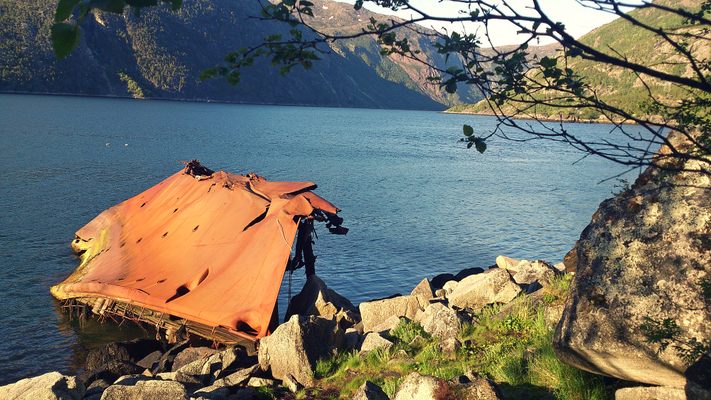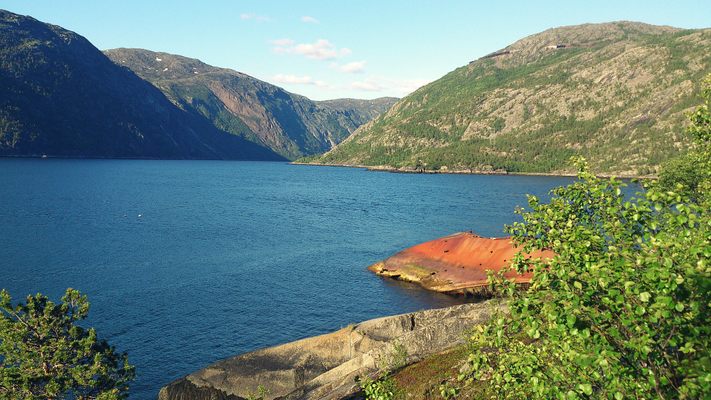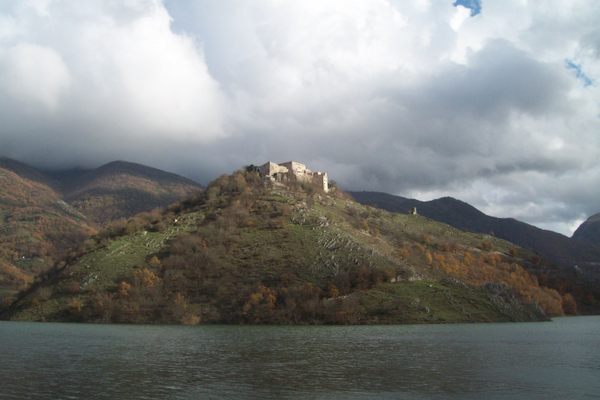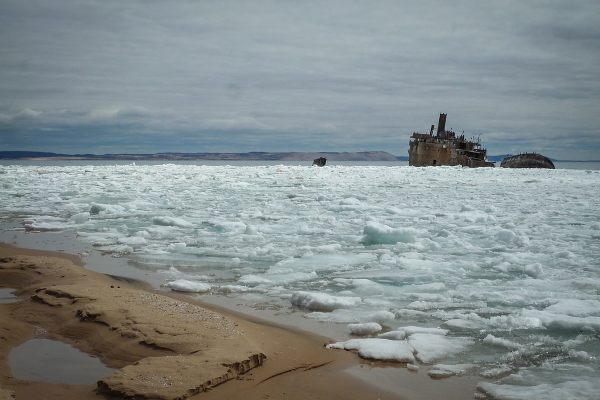About
A rusting hunk of metal juts out from the water within one of Norway’s famously breathtaking fjords. Tinged yellowish orange by time, it stands out among the green hillsides and brilliantly blue water.
It’s nearly all that remains above water of the Z2 Georg Thiele, a German Type 1934-class destroyer. Built in 1934, the ill-fated vessel was only active for six short years before it was run aground during World War II.
The destroyer met its demise during one of the Battles of Narvik, which were part of the Norwegian Campaign. It, along with other German defense vessels, squared off against the Allied Forces that attempted to overtake the fjord and nearby city.
At the start of the battle, the Z2 Georg Thiele managed to do some damage to the incoming fleet. However, it was later hit by heavy Allied fire. This subsequently caused actual fires to flare up within the ship. The damage was so bad the captain purposely ran it aground so the crew could escape to land. The vessel later snapped in two and capsized.
Now, the wreck is a superb diving site for any military history buffs. Though its hull pokes above the surface, the rest of the ship lies drowned below (apart from its bell, which is displayed in a nearby museum). The fjord is a treasure trove of submerged and sunken war relics, thanks to the many battles that took place within its waters.
Update August 2018: As of at least July 31st, access to the wreck is blocked by construction on a nearby electrical substation. Nonetheless, you can still get fairly close to the wreck.
Update September 2018: Construction work on the nearby electrical substation still continues. As they are putting the wires at the moment access to the ship is totally blocked and there is no other parking possibility left than at the plot with boathouses from where the ship is invisible. With a good telelens, you can take a picture from the road at about half a mile from the ship itself.
Related Tags
Know Before You Go
From the parking area you have to walk about 30 minutes to the final location. Be careful: Parts of the walk are muddy, slippery, and over rocks. The path is also rather hidden, so make sure to look behind the green building for its starting point.
Community Contributors
Added By
Published
March 6, 2018


























